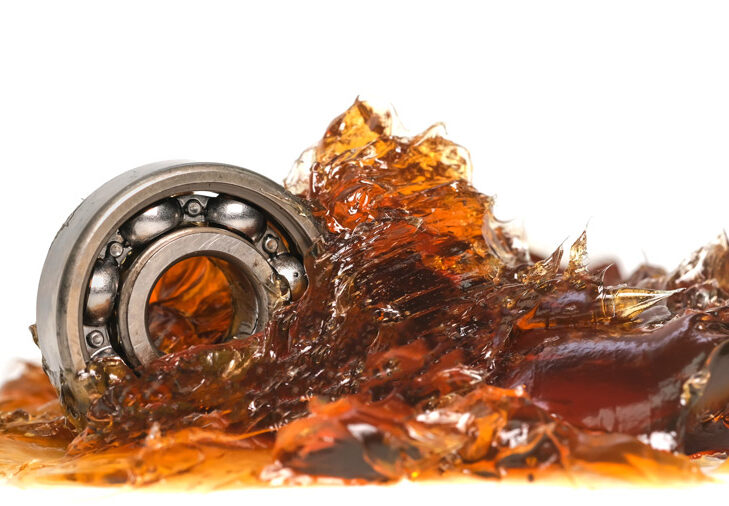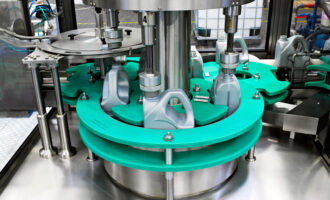
NLGI targets January 2021 for new High-Performance Multiuse grease specification
The National Lubricating Grease Institute or NLGI is on the verge of releasing a new high-performance multiuse (HPM) grease specification that will modernise the incumbent standard and provide broader utility. The new benchmark will include an HPM core specification that delivers higher performance than the existing GC-LB specification, as well as enhanced sub-categories for water resistance, corrosion resistance, high load, and low temperature.
The finalisation meeting, originally planned to be held in Miami, Florida, U.S.A., was completed virtually in June and unveiled a draft recommendation of the new classification. Board of Directors’ approval will be sought between July and September 2020, with NLGI’s Grease Specifications Working group aiming to publish the new specification towards the end of the year. A marketing taskforce is working towards a January 2021 rollout.
In 1989, a joint effort between NLGI, ASTM International and SAE culminated in the development of the GC-LB grease specification, which was published as ASTM D4950, the “Standard Classification and Specification for Automotive Service Greases.” While this specification was “ground-breaking” at the time, it took 21 years to develop. It is more than 30 years since the internationally recognised performance classification was published. GC-LB, originally conceived as an automotive chassis and wheel bearing specification, is now considered a mark of quality for grease specifiers. Currently, 306 products are licensed by 85 different companies, with a 10% increase in licenses since May 2014.
To date, the HPM grease specification is 18 months in the making. Considering the typical speed of new specification development, this is a remarkable achievement. The Grease Specification Working Group was led by Mike Kunselman of the Center for Quality Assurance and NLGI Technical Expert Chuck Coe.
During the meeting, Kunselman highlighted “impressive participant expertise,” the inclusion of “real-life experiences,” and a continuous feedback loop as key inputs into a streamlined process. Test development is a routine stumbling block for specification updates. About one-quarter of the HPM tests, methods and limits could be agreed with consensus, says Kunselman. The remainder required additional data collection and analysis.
In recent years, advancements in materials and technologies prompted calls for the update or replacement of GC-LB. Many OEMs asserted the existing performance standard was unsuitable for new applications. “The current premise that we need a lubricating grease performance standard for automotive service greases for passenger cars and light trucks is significantly distant from reality,” says Dr. Gareth Fish, technical fellow, at The Lubrizol Corporation. “There is almost no service requirement for light-duty automotive greases today,” he says, as more than 90% of applications are sealed for life.
In December 2012, ASTM D02.B0.04 met in Norfolk, Virginia, U.S.A., to discuss the approval of ASTM D4950. The validity of several test methods was called into question due to issues with repeatability and reproducibility. Problematic tests included ASTM D2265 (and D566) Dropping Point, D3527 Grease Life, D4290 Grease Leakage, D4170 Fretting Wear, D4289 Elastomer Compatibility and D4693 Low-Temperature Torque.
During the 2015 NLGI Annual Meeting in Coeur d’Alene, Idaho, U.S.A., a working group was established to consider the upgrade or replacement of GC-LB. In 2019, the working group determined a new “challenging but realistic” standard was required for the grease industry, as opposed to upgrading GC-LB.
The HPM specification will not replace the current GC-LB specification, Fish said. We will continue to offer GC-LB certification as long as there is a need, he added. GC-LB is still widely used, particularly in the trucking industry. ASTM D4950 was reapproved in 2019 and will remain valid until at least 2024.
The HPM core specification introduces several new tests, including: Oxidation Stability of Lubricating Greases by the Oxygen Pressure Vessel Method (ASTM D942); Low-Temperature Torque of Ball Bearing Grease (ASTM D1478); Oil Separation from Lubricating Grease using the Conical Sieve Method (ASTM D6184); Roll Stability of Lubricating Grease using ½ scale penetration (ASTM D1831); the Emcor Test for determination of corrosion-preventive properties of lubricating greases under dynamic wet conditions (ASTM D6138); and Detection of Copper Corrosion from Lubricating Grease (ASTM D4048). Several existing GC-LB tests are retained with more stringent test limits.
 For some HPM tests, limits are still being defined. Road testing will be used to establish or confirm the limits within the specification over the coming months. If there is a problem with a certain limit, we can revisit it, said Coe. The specifications will be “live,” and will evolve, he added.
For some HPM tests, limits are still being defined. Road testing will be used to establish or confirm the limits within the specification over the coming months. If there is a problem with a certain limit, we can revisit it, said Coe. The specifications will be “live,” and will evolve, he added.
During the finalisation meeting, Coe emphasised the multiuse nature of grease. The specification is “not intended to provide superior performance under extreme conditions.”
Even considering the supplementary performance “tags” that deliver improved water resistance (WR), higher load carrying capacity (HL), saltwater corrosion resistance (CR) and low-temperature performance (LT) — the new specification is not suitable for extreme conditions, he said. To qualify for the supplementary performance “tags”, such as HPM+WR, a grease must first achieve the HPM core specification requirements.
Initially, the HPM specification included a High Temperature/Long Life category. This component was put on hold as it became apparent that test development could take several years. Following the launch of the HPM specification, work on the long life tag will continue with an estimated timeframe of between two to five years.
The new specification is intended to be chemistry neutral, said Coe. NLGI has focused on the creation of a performance specification, not one that would eliminate a certain type of chemistry or mandate the use of certain base oils.







